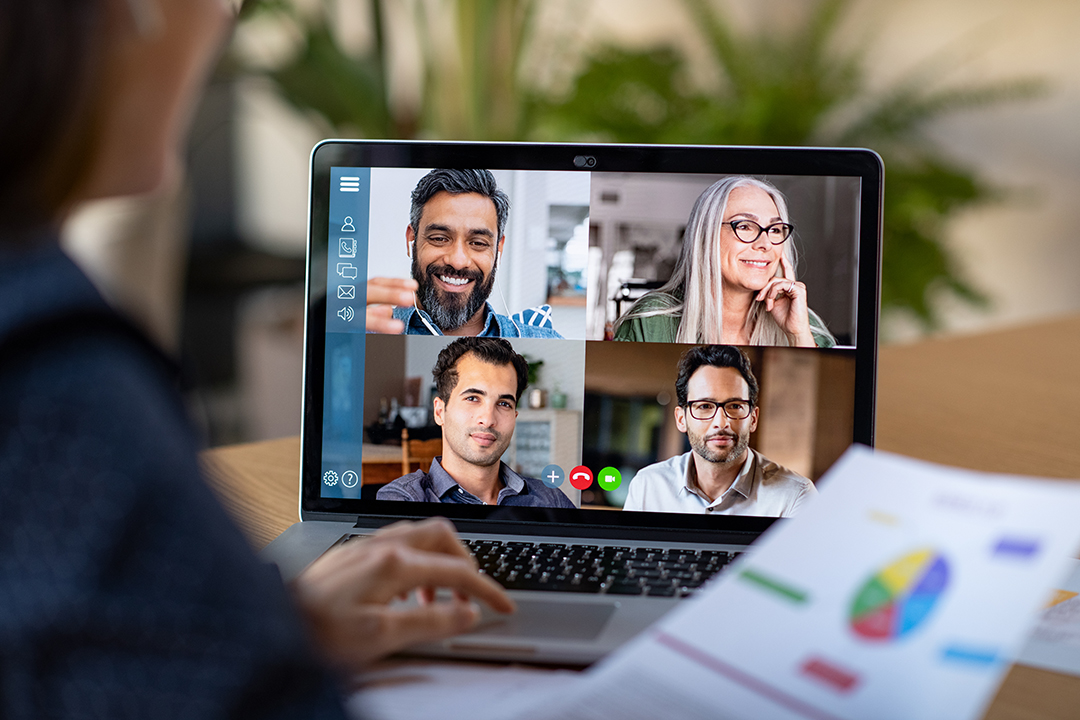

The Covid-19 pandemic is a health crisis earthquake followed by an economic crisis tsunami. You only have to glance at your phone to see predictions and warnings about the oncoming “new normal”. But the seeds of the future are found in the shifts of today, so it can be instructive to look at the immediate impacts of the pandemic on consumer thoughts, feelings and actions.
1. We’re having more long-distance relationships with professionals
With limited options for in-person consultation, videoconferencing is becoming the norm for everyone from GPs to palm readers. For some categories, this means less-than-ideal conditions, creating a demand for things like home-testing and measuring tools. Whether you’re a doctor or an accountant, the task of gathering data is sitting more with the customer, while the expert’s interpretation and recommendation can be done from afar.
(A flow-on effect of more IoT devices in homes is the network effect of decentralised data. A relevant example is the smart connected thermometer produced by Kinsa. At scale, the anonymised data of thousands of users paints a picture of fever spread in real time.)
Gyms have responded to lockdowns by offering live-streaming yoga and aerobics classes, banking on their existing relationships with members to keep them interested. Again we see the same pattern: salvage and develop those elements of value exchange, which don’t rely on location or inaccessible physical equipment. What can a gym professional offer from afar? Expertise, instruction and inspiration.
On the plus side for consumers, with in-person out of the question in many situations, barriers to professional consultation are lowered. When you don’t have to visit in person, there’s no difference between a professional down the road and a professional on the other side of the world. In fact, for consumers, this is an equaliser in being able to access the best, previously unattainable.
Pioneers like BetterHelp.com have been disrupting the counselling category for a while, but with broader familiarity with distance consulting, we could see the same thing happening with GPs, specialists, physical therapists, perhaps even accountants and lawyers. Professional services might want to look at the histories of computer programming and call centres for what happens when proximity stops being a factor.
2. We have a newfound appreciation for the science of hygiene
If we didn’t know how to wash our hands before, we sure do now. But it’s not just personal hygiene that’s been taken to the next level. Household cleaning products previously positioned around cleanliness are now practically medicinal. Dirty surfaces at home are no longer merely disgusting, they’re dangerous (and perhaps the “clean” surfaces are too).
It’s unlikely that our hyperconsciousness of other people’s hygiene will end with this pandemic, either. Restaurants have always been under the microscope for hygiene, but now retailers too are being judged against similarly high standards. It’s probably too fanciful to suggest that clothing stores and computer stores will be displaying their “A-rating” hygiene certificates, but if you had to choose between stores, would it make you think?
Contactless payments are table stakes for hygiene now, of course. Mastercard has upped its contactless payment limit to $200 in Australia, removing keypads from the equation for more transactions. But consumers are also more conscious of literal touchpoints in the chain of custody of their purchased goods. Who touched the items as they were shelved? Who packed the parcel delivered to my letterbox? Were they wearing gloves?
Yes, we’re in the peak of germ-consciousness right now, but we can expect a lasting raised bar for hygiene standards in personal and commercial life for some time.
Across the board research and the ‘scientification’ of hygiene products will continue to accelerate, with an explosion in health-related retailers – just as we will see a significant increase in investment in preventive medicine research to better prepare us all to face future health crises of this sort.
3. Remote working is working… for some
As lockdowns hit, businesses have had to evolve very quickly to manage processes and workflow with a workforce working from home. Just like the overnight explosion of online Retail driven by self-isolation, overnight companies have been forced to embrace the power of digital to enable work from home - chat rooms (Slack, Teams), videoconferencing (Zoom, Google Meet, Skype for Business), digital project management (Trello, Asana) and VPNs.
For many businesses, this is a stopgap measure until proper on-site work can resume. But for some teams, the shift has been a revelation in what’s possible. Hours of commuting have been returned to people’s control. And with office rent representing significant fixed costs in many businesses, the question is starting to be asked: is an office a necessity or a luxury?
On the other hand, for good or ill, workplaces offer the majority of social interaction for most people. Videoconferencing may be able to replace meetings in terms of work effectiveness, but it can’t replace in-person human interaction. The isolation of lockdown is hitting different people in different ways, and we haven’t yet seen the full picture.
So results vary from person to person, business to business, category to category. But remote working as a viable option has been well and truly established now, and the tools and methodologies around making it work as well as possible will continue to evolve. Is this the seismic shift millions of workers have been seeking, and if so, how do businesses re-adjust? We have had of multi-nationals requiring employees to confirm in writing that their home work environment meets OHS requirements of safety and comfort. Will we see the evolution of the People & Culture role to the Connector-Executive whose core KPI is to ensure that teams connect daily, visibly, that team members are safe, healthy and content (meaning mentally strong and not at risk of a breakdown due to isolation) AND are participating with the new systems and processes for data management, required for mass working off-site?
These are just several broad trends that we’re seeing today which business leaders are grappling with, to harness potential and reduce risk, as they lead into the new normal. These trends hint now at long-term impacts. At first glance, the common theme among them might seem to be isolation or fear or confinement. But they also suggest that the extreme circumstances of the pandemic are revealing what’s possible – and those possibilities will outlive Covid-19.
Gill.fish@the6amagency.com.au
+61 400 200 441
www.the6amagency.com.au
LI @Gillian Fish